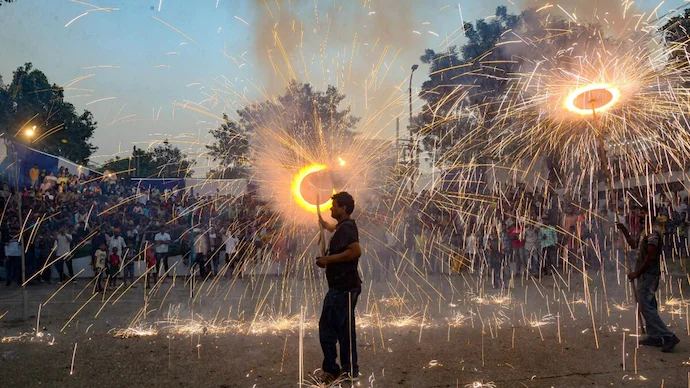The Supreme Court has come down heavily on environmental inaction, ordering Rajasthan, Uttar Pradesh, and Haryana to issue a complete ban on firecrackers within a month. The directive follows a compliance affidavit submitted by the Delhi government, which has already enforced a full prohibition on the manufacturing, storage, and sale of firecrackers.
Highlighting Delhi’s proactive measures, a bench of Justices Abhay S Oka and Ujjal Bhuyan said the same standard must be applied to neighbouring states. The bench invoked Section 5 of the Environment Protection Act (EPA), which grants the central government authority to issue binding directions to regulate environmental threats. The court has mandated these states to act within one month and ensure strict execution.
However, concerns over implementation led the court to take it a step further ordering the creation of a grievance redressal mechanism in each state to address public complaints and monitor violations related to firecracker use. The court also instructed the authorities to launch awareness campaigns, periodically informing citizens of the ban and the consequences under the EPA.
SC Flags Vacancies in Pollution Control Board
The focus wasn’t solely on bans. During the hearing, the court also addressed broader governance failures. Senior Advocate Aparajita Singh, acting as amicus curiae, pointed to persistent vacancies in key pollution control agencies, especially in the Central Pollution Control Board (CPCB). Out of 603 sanctioned positions, 134 remain unfilled, she noted. She emphasized that this staffing gap was not unique to the CPCB but extended to various state pollution control boards as well.
The bench expressed frustration over the underutilisation of environmental funds. The justices were particularly critical of Delhi, which has reportedly spent only 30% of its allocation under the National Clean Air Programme (NCAP) since 2019. “So, they have the money but are not using it?” a judge remarked, reflecting the court’s dissatisfaction.
Previously, the court had also raised concerns over systemic lapses in pollution control frameworks. Bodies such as the Commission for Air Quality Management (CAQM) were flagged for staff shortages and administrative delays, weakening the overall response to worsening air quality in the region.
With air pollution emerging as a critical health crisis in northern India, especially during festive months, the court’s latest intervention is aimed at pushing states toward more accountable and urgent action. The emphasis on both enforcement and infrastructure reflects a growing judicial impatience with half-measures in tackling environmental degradation.


